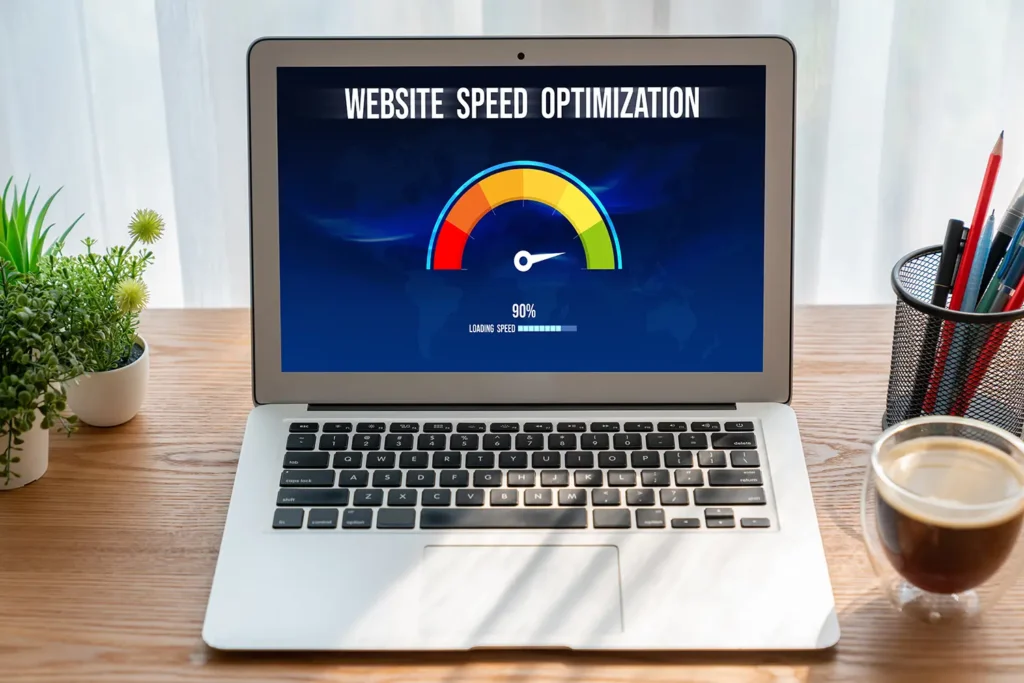
Core Web Vitals and Speed Optimization – The Key to Improved User Experience
Why Website Performance Matters More Than Ever
User experience isn’t just a nice-to-have—it’s a core factor influencing your site’s search engine performance, bounce rate, and conversions. To stay ahead of the competition, website owners and developers must prioritize website speed optimization and understand the importance of core web vitals SEO.
Core Web Vitals are performance metrics from Google that measure how users experience your site in real-world conditions. They focus on loading performance, interactivity, and visual stability—key elements that can make or break the user’s journey.
At Decisive Design, we believe that optimizing these elements is not just a technical requirement—it’s a strategic advantage for brands looking to grow online.
A Quick Breakdown: What Are Core Web Vitals?
Core Web Vitals include three specific metrics used to evaluate your website’s performance:
- Largest Contentful Paint (LCP): Measures how fast the main content loads. Target: under 2.5 seconds.
- First Input Delay (FID): Evaluates interactivity. Target: less than 100 milliseconds.
- Cumulative Layout Shift (CLS): Tracks visual stability during loading. Target: below 0.1.
Improving these metrics is essential for both SEO and user experience, and is a critical component of any core web vitals SEO strategy.
How to Improve Core Web Vitals for Better Engagement and Rankings
Tactics to Optimize LCP (Loading Speed)
- Eliminate Render-Blocking Scripts: Minify JavaScript and CSS.
- Compress and Lazy Load Images: Improves website speed optimization significantly.
- Use a CDN: Speeds up load times by serving content from the nearest server.
Tactics to Optimize FID (Interactivity)
- Break Long Tasks: Ensure JavaScript tasks don’t exceed 50ms.
- Prioritize Critical Input: Load vital assets first to allow for immediate user interaction.
- Use Passive Event Listeners: Improve scroll and click responsiveness.
Tactics to Optimize CLS (Stability)
- Predefine Media Dimensions: Prevents layout shifts on load.
- Reserve Space for Ads/Popups: Avoids disruptive content jumps.
- Control Font Behavior: Use proper font-display settings to minimize reflow.
Speed Optimization: A Non-Negotiable for Modern UX
Fast websites aren’t just convenient—they convert better, rank higher, and create stronger brand trust.
Here are key website speed optimization strategies to implement:
- Enable Browser Caching: Helps repeat visitors load the site faster.
- Minify and Combine Assets: Reduces file size and server requests.
- Design with Mobile in Mind: Optimize your layout and assets for mobile speed and usability.
Stay Ahead: Tools and Tactics to Track Performance
To maintain excellent performance, tracking your core web vitals is crucial.
Use these best practices:
- Google Tools: PageSpeed Insights, Search Console, and Lighthouse.
- Real User Monitoring (RUM): Captures data from real sessions for actionable insights.
- Benchmark Your Metrics: Set baselines and monitor improvement over time.
Unlock Your Site’s Potential with Smart Optimization
Mastering core web vitals and implementing effective speed optimization are crucial to delivering the kind of user experience that drives engagement, trust, and higher search engine rankings.
At Decisive Design, we specialize in helping businesses create fast, user-centric websites that perform as beautifully as they look. Whether you’re improving performance for SEO or creating a seamless experience for visitors, our expert team is here to help.
Want to improve your site’s speed and user satisfaction?
Reach out to Decisive Design today and discover how our tailored web solutions can help your business grow online.